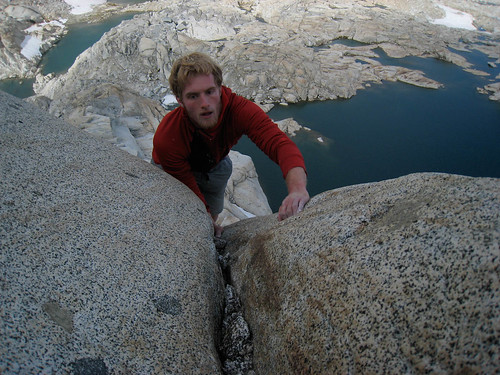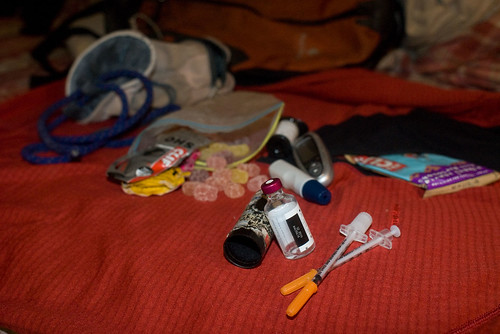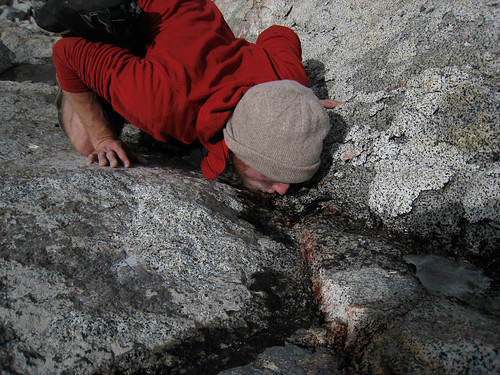
I have this certain nostalgic notion that one can run through the mountains like a wild animal. A fantasy that, with the right level of fitness, gear and food are barely needed and I can just float... an impossible dream, but there are times when people have come close. Peter Croft traversed the enchantments with nothing but a water bottle with a peeled banana floating in it and a fig bar stashed on a distant summit.
Things are a bit more complicated for the type I diabetic. Exercise makes insulin more effective at processing blood glucose and the risk of a low blood sugar becomes greater on long days. To truly experience the freedom of the hills the diabetic must temporarily reduce the amount of insulin he uses and carry enough food to get him back to camp, the car, or his pack safely should a low blood sugar occur.

While running or multi pitch climbing I generally try and carry a few simple items stashed in pockets or the zippered pouch on my chalk bag:
A ziplock bag containing organic vegetarian gummy bears and two cliff shots. To treat a low blood sugar I eat a handful of gummy bears to quickly raise my sugar and follow up with a cliff shot to prevent me from going low again. This combination is quite effective and may, in fact, result in a high blood sugar. I choose these particular foods because they are squish resistant and consumable in a wide range of temperatures.
0-3 bars. Usually cliff mojo bars or plain old snickers bars (not when it is hot...they melt). This is food I plan to eat to stay energized plus a bit extra if I am forced to stay out longer then planed. These go in pockets.
Diabetic stuff. Blood sugar test kit, fast acting insulin (in a protective container...i use an old test strip vial) and two syringes. I can stuff these items and the bag of gummy bears in the bottom of my chalk bag, using the gummy bears as padding to protect the medical supplies.
If i am out all day bring more real food (sandwiches, fruit, chocolate, nuts, trail mix) to keep my energy levels up. In particular, I find protean and complex carbs very important to keeping my sugars well regulated, particularly in the morning. These will usually go in a small pack along with some extra clothing and my long acting insulin.
I take a shot of long acting insulin (lantus) in the morning and in the evening, I find that i need to reduce the size of the shots i take in the morning before a long day and the evening after and reduce the number and size of the fast acting shots I take throughout the day. If you choose to try such a program, consult your doctor first and be sure to test your blood sugar frequently and make notes of what works and what doesn't.
Hydration is vary important but is no different for the diabetic then for a normal climber. Carrying lots of water sucks and various strategies can be used to reduce the need. It boils down to wake up early, climb quickley and bring your water or know what you need to do to find/make safe water in the area you will be in.








